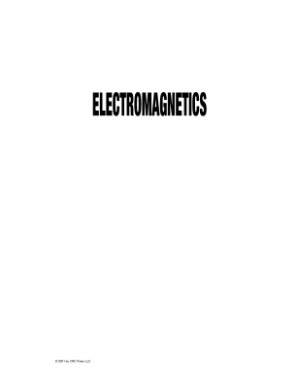CRC Press, Boca Raton, 2001, 540 с.
The organization of the book is in six chapters. In Chapter 1 we present essential background on the field concept, as well as information related specifically to the electromagnetic field and its sources. Chapter 2 is conceed with a presentation of Maxwell's theory of electromagnetism. Here attention is given to several useful forms of Maxwell's equations, the nature of the four field quantities and of the postulate in general, some fundamental theorems, and the wave nature of the time-varying field. The electrostatic and magnetostatic cases are treated in Chapter
3. In Chapter 4 we cover the representation of the field in the frequency domains: both temporal and spatial. Here the behavior of common engineering materials is also given some attention. The use of potential functions is discussed in Chapter 5, along with other field decompositions including the
solenoidal lameliar, transverse longitudinal, and TE TM types. Finally, in Chapter 6 we present the powerful integral solution to Maxwell's equations by the method of Stratton and Chu. A main mathematical appendix near the end of the book contains brief but sufficient treatments of Fourier analysis, vector transport theorems, complex-plane integration, dyadic analysis, and boundary value problems. Several subsidiary appendices provide useful tables of identities, transforms, and so on.
The organization of the book is in six chapters. In Chapter 1 we present essential background on the field concept, as well as information related specifically to the electromagnetic field and its sources. Chapter 2 is conceed with a presentation of Maxwell's theory of electromagnetism. Here attention is given to several useful forms of Maxwell's equations, the nature of the four field quantities and of the postulate in general, some fundamental theorems, and the wave nature of the time-varying field. The electrostatic and magnetostatic cases are treated in Chapter
3. In Chapter 4 we cover the representation of the field in the frequency domains: both temporal and spatial. Here the behavior of common engineering materials is also given some attention. The use of potential functions is discussed in Chapter 5, along with other field decompositions including the
solenoidal lameliar, transverse longitudinal, and TE TM types. Finally, in Chapter 6 we present the powerful integral solution to Maxwell's equations by the method of Stratton and Chu. A main mathematical appendix near the end of the book contains brief but sufficient treatments of Fourier analysis, vector transport theorems, complex-plane integration, dyadic analysis, and boundary value problems. Several subsidiary appendices provide useful tables of identities, transforms, and so on.

